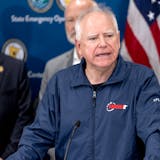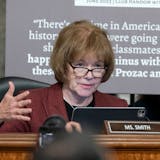Across the country, churches, charities and nongovernmental groups create successful programs that lift people out of poverty, into jobs and better lives.
And yet, inequality and poverty remain as persistent a problem in the United States today as a half-century ago.
Starting Monday, dozens of the nation's top economists and researchers on poverty and inequality will participate in a two-day conference at the Federal Reserve Bank of Minneapolis to explore that paradox — and whether the nation's central bank can do anything about it.
The conference is the first public event of the Opportunity and Inclusive Growth Institute formed late last year at the Minneapolis Fed. The bank's president, Neel Kashkari, had encountered the poverty paradox as a politician in California and an official in the U.S. Treasury Department.
"I'm really having trouble reconciling what seems to be progress on the ground at a micro level and seemingly a total lack of progress at the national level," he said in an interview last week.
The data point that stands out for him, Kashkari added, is that blacks tend to be unemployed at twice the rate of whites no matter what the economic conditions are.
"Recession or booming economy, it's always 2X," he said. "Even if you take college graduate against college graduate, or high school dropout against high school dropout. It's all 2X. It's extraordinary."
He said he doesn't believe the central bank can solve the problem through monetary policy or the use of interest rates to influence behavior in banking and business. But he noted the Fed is the biggest recruiter and employer of economic researchers.


